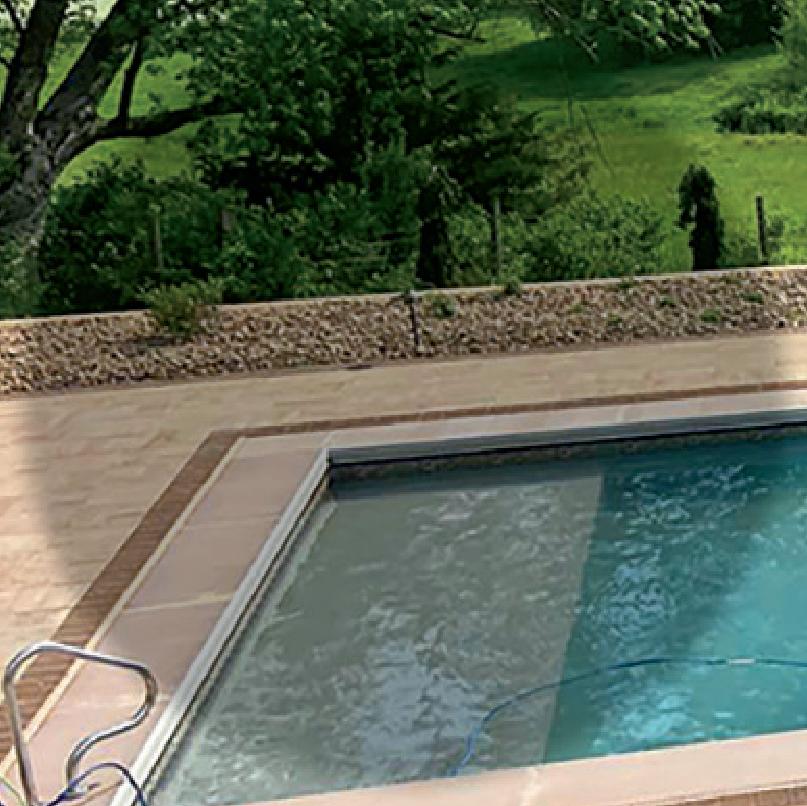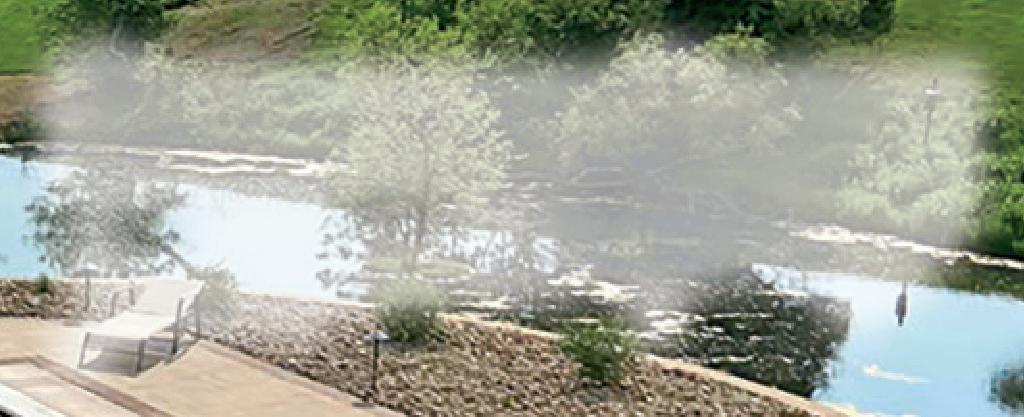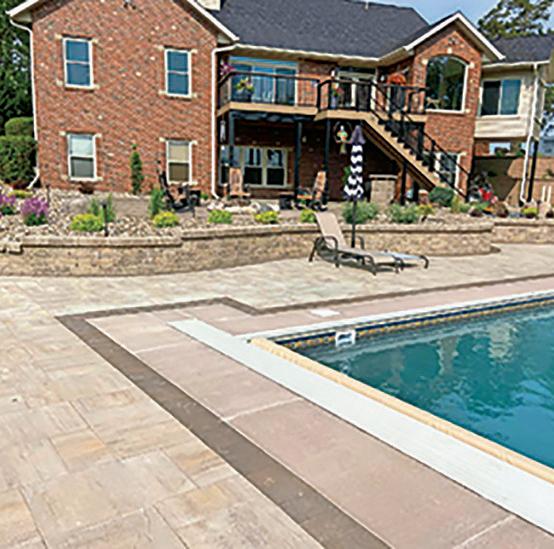








Gardening is a popular hobby all over the world. Ruby Home Luxury Real Estate estimates there are 71.5 million gardening households in the United States alone. That translates to around 185.9 million people engaged in some form of gardening, which places the U.S. among other countries where gardening is wildly popular, including Australia and China. A greater number of people are showing interest in gardening, which is a rewarding hobby that’s good for the mind and the body. Those who are new to gardening may need a crash course to get started. These pointers can help anyone foster a newfound passion for gardening.
Choose the best location
Spend time in the yard and decide where to house a garden. A far-off corner may get the most sun, but will you forget about the garden if it is too far away? Ideally, the garden should be located where it will get at least six to eight hours of sun
each day. There also should be a water source nearby. The spot also should be convenient so that it is easy to go and pick vegetables or prune flowers.
Start small
If you’re new to gardening, begin with a small garden footprint so that you can get your feet wet. A raised garden bed can be a good starting point because it is contained and easy to maintain. As your experience (and garden) grows, you can add to the garden size the next time around.
Amend the soil
It’s possible but unlikely that the soil in the backyard is the perfect mix to grow healthy plants. It’s more likely that the garden will need some soil modification. You can test the soil makeup with do-it-yourself kits or work with a garden center. A garden typically requires a mix of compost to add nutrients to the dirt; peat moss or coconut coir to help with water retention and to make the soil lighter; and vermiculite that






helps to retain water. A compost bin set up at the same time as the garden allows gardeners to continually produce nutrient-rich food to add to the garden.
Plant starter guide
It’s best to keep a few things in mind when planning the garden. Think about what will grow well in your climate. Consider how big the garden will be and the size of mature plants. A small garden will not be able to accommodate corn, for example. Also, how would you like the space to look and what will be its function? Is this a purely aesthetic garden or one that will be food-bearing?
Start seeds inside
If you’ll be starting a garden from seeds, it’s best to start indoors before your region’s frost-free date. This way the delicate plants will get the needed care and can establish before they go outdoors in the ground. Keep them humid by covering the seedlings in plastic wrap. You can


start the seeds in different containers, even empty egg cartons. Transplant to larger containers after the seedlings grow a second set of leaves. Once you’re free from overnight frost, you can place the established, strong seedlings in the ground. An automatic watering system, such as a timer hooked up to the sprinkler, can keep the garden well watered, which increases the chances of success. Then it will only be a matter of weeks before the garden can be enjoyed throughout the season.






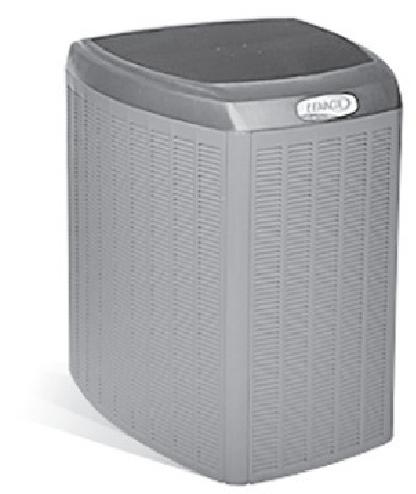







Many people view spring as a season of rejuvenation. That renewal may be somewhat metaphorical for human beings, but it’s literal for lawns and gardens that begin to grow anew as temperatures rise and hours of daylight increase in spring.
Each spring presents an opportunity for homeowners to get back outside and tend to their gardens. As the temperatures rise, homeowners can consider these spring planning pointers to ensure their landscapes look lush and full in the months ahead.
• Start with the soil. Soil can serve as the starting point each spring. Winter can take its toll on a garden and even overwhelm the area with debris over the colder months. Clear rocks and other debris from the area before loosening the soil. The Farmer’s Almanac recommends loosening soil to a depth of at least eight inches if planting a new garden. An existing garden may only need to be loosened to
a depth of around six inches, after which homeowners can mix compost into the soil in early spring. Compost is organic matter that provides nutrients and helps to build strong plant roots.
• Consider a raised garden in colder climates. The Farmer’s Almanac notes raised gardens can help homeowners in colder climates dry out and warm up wet, cold soils more quickly. Homeowners in such regions also can cover their beds with black plastic or cardboard prior to planting. Doing so can protect the beds from late-season snow and spring rains and also helps to overcome erosion.
• Take soil temperatures. Unpredictable weather is among the noticeable effects of climate change in recent years. That lack of predictability can make spring planting a little more tricky than it once was. Experts note that soil temperatures around 50 F are best for cool-season crops, while soil should be 60 F or warm-

er when planting warm-weather plants such as tomatoes.
• Work with a garden center to identify what to plant. The right plants for one region may not be ideal for another, so homeowners are urged to work with a local landscaper or garden center before planting. Such a consultation can be especially useful for homeowners planting a new garden. Landscapers and garden center professionals will know which plants work in the local climate.
• Consider planting vegetables in the spring. Various garden experts note that spring is an ideal time to plant a vegeta-
ble garden. If planted at the right time, a vegetable garden can save homeowners money on their grocery bills and provide a season’s worth of fresh veggies. Lettuce and spinach are sun- and shade-friendly vegetables, which can make them good options for a spring garden. Cool-season root vegetables, which include beets, carrots and swiss chard, are some other notable veggies that can thrive in early spring. Spring is a season of rejuvenation for gardens. That’s even more true when homeowners consider some conventional planting wisdom in early spring.
— Metro Creative
Homeowners know there’s no shortage of ways to tweak a property. Some homeowners may lament that the work associated with home ownership is never done, but owning a house also provide endless opportunities to upgrade the spaces people call home.
Landscape lighting has become increasingly popular in recent years. That popularity is undoubtedly due to a number of variables, and each highlights a benefit of installing landscape lighting around a property.
• Affordability: Some may think of big budget projects like kitchen remodels or room additions when pondering home renovations. Such projects can have a dramatic impact on the look and feel of a home, but landscape lighting can be equally transformative at a fraction of
the cost of larger undertakings.
The home renovation experts at Angi.com estimate the average landscape lighting project costs around $4,000, making affordability a notable benefit of the project.
• Appearance: There’s no denying the aesthetic appeal of a well-lit landscape at night. Landscape lighting can be utilized to draw attention to awe-inspiring components of a landscape, whether it’s natural features like gardens and foliage or manmade components like architectural features. Improved appearance can increase curb appeal, which is often associated with how a home looks during daylight hours. But photographs of a well-lit nighttime landscape can impress buyers as well.
• Cost savings: Landscape lighting might help homeowners
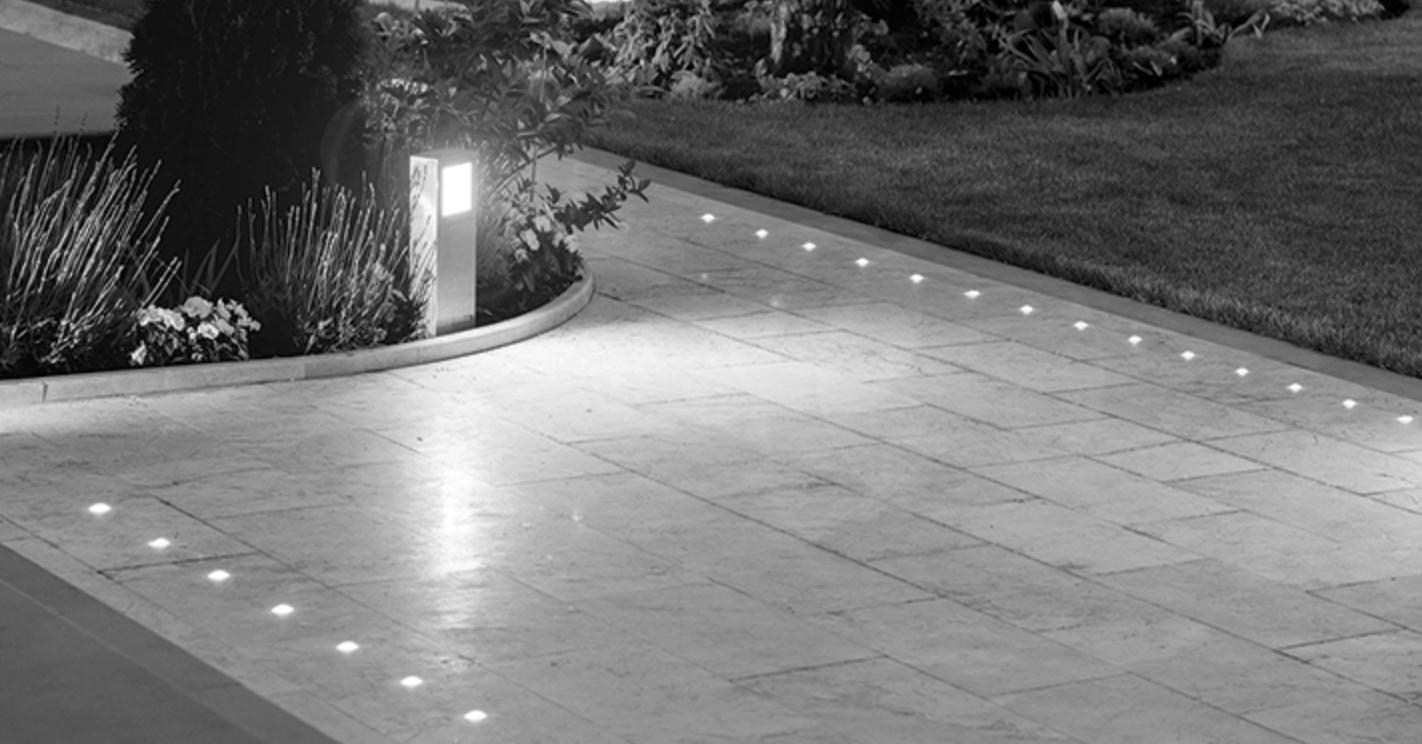
reduce the cost of their homeowners insurance. Researchers at PolicyGenius.com found that insurance companies typically offer a discount of 2 to 5 percent to homeowners who install a home security system. Insurance providers may offer additional savings to homeowners who pair such systems with landscape lighting, which can be a deterrent to burglars who prefer to operate
under a cloak of darkness.
• Safety: Insurance firms may discount premiums because of landscape lighting because they view it as a deterrent to potential criminals. But landscape lighting also makes moving around a property at night safer for residents and guests. Lighting can be used to illuminate walkways, outdoor living rooms, patios around pools, and other areas where res-
idents and guests will be walking at night, which can reduce the risk of falls and injuries that may result from such spills.
• ROI: Savvy homeowners consider a renovation’s return on investment before deciding to go forward with a project. Studies vary, but the National Association of Realtors indicates landscape lighting can recoup as much as 70 percent of homeowners’ investment in the project at resale. When viewed through the lens of ROI, the cost of installing landscape lighting is even less.
Landscape lighting adds notable aesthetic appeal to a home at a fraction of the cost of other renovation projects. The benefits such lighting provides make the project one every homeowner can consider.

A number of factors can affect how well a garden or lawn takes root. Watering is a key element of any landscape care strategy, and one that homeowners should educate themselves about if they want to maintain a lush, healthy lawn throughout spring and summer.
Homeowners hoping to keep their lawns lush and green throughout summer can learn some effective watering strategies to achieve that goal.
Check the irrigation system
Water Sense®, an EPA Partnership Program, advises following four steps at the start of spring: inspect, connect, direct, and select for clock timer-controlled irrigation systems. Make sure the system doesn’t have any clogged, broken or missing sprinkler heads.
Examine points where the sprinkler heads attach to pipes or hoses to make sure there are no leaks. The EPA says even a leak as small as the tip of a pen can waste 6,300 gallons of water per month. Adjust the sprinkler heads so that they only hit the landscape elements rather than sidewalks or driveways. Align the watering schedule with the seasons.
Invest in an impact sprinkler
An impact sprinkler on a tripod can be an effective option for those without built-in irrigation systems. These sprinklers rotate in circles to help deliver an even spray of water that mimics rainfall. It’s easy to adjust their spray pattern and a sprinkler on a tripod can spray over the top of bushes and flower gardens.
According to Rainbird.com, drip irrigation tubing and emitters slowly distribute water to the right spots of a landscape. They can be placed at ground level or buried underground. Water soaks directly to the roots, minimizing water loss from runoff and evaporation. Some research suggests drip irrigation can effectively cover 25 percent more area than the average sprinkler system. It also tends to deliver more than 95 percent water efficiency.
Skip the schedule
Watering a lawn or garden should not be ruled by a schedule, but other factors that will determine when water is needed, suggests Family Handyman. Daytime temperatures, wind conditions, soil type, lawn type, and recent
rainfall will determine how much water the landscape really needs. Overwatering can be just as bad as underwatering. For those with underground watering systems, water sensors can trigger the system to turn on rather than a time on a clock.
Avoid midday watering
The sun is hottest in the middle of the day. Watering during this time means that much of the water will be lost to evaporation before it can get to thirsty lawns and plants. It pays to be smart about watering. Homeowners also can consider rain collection barrels to offset municipal or well water usage and be more eco-conscious about their watering efforts.
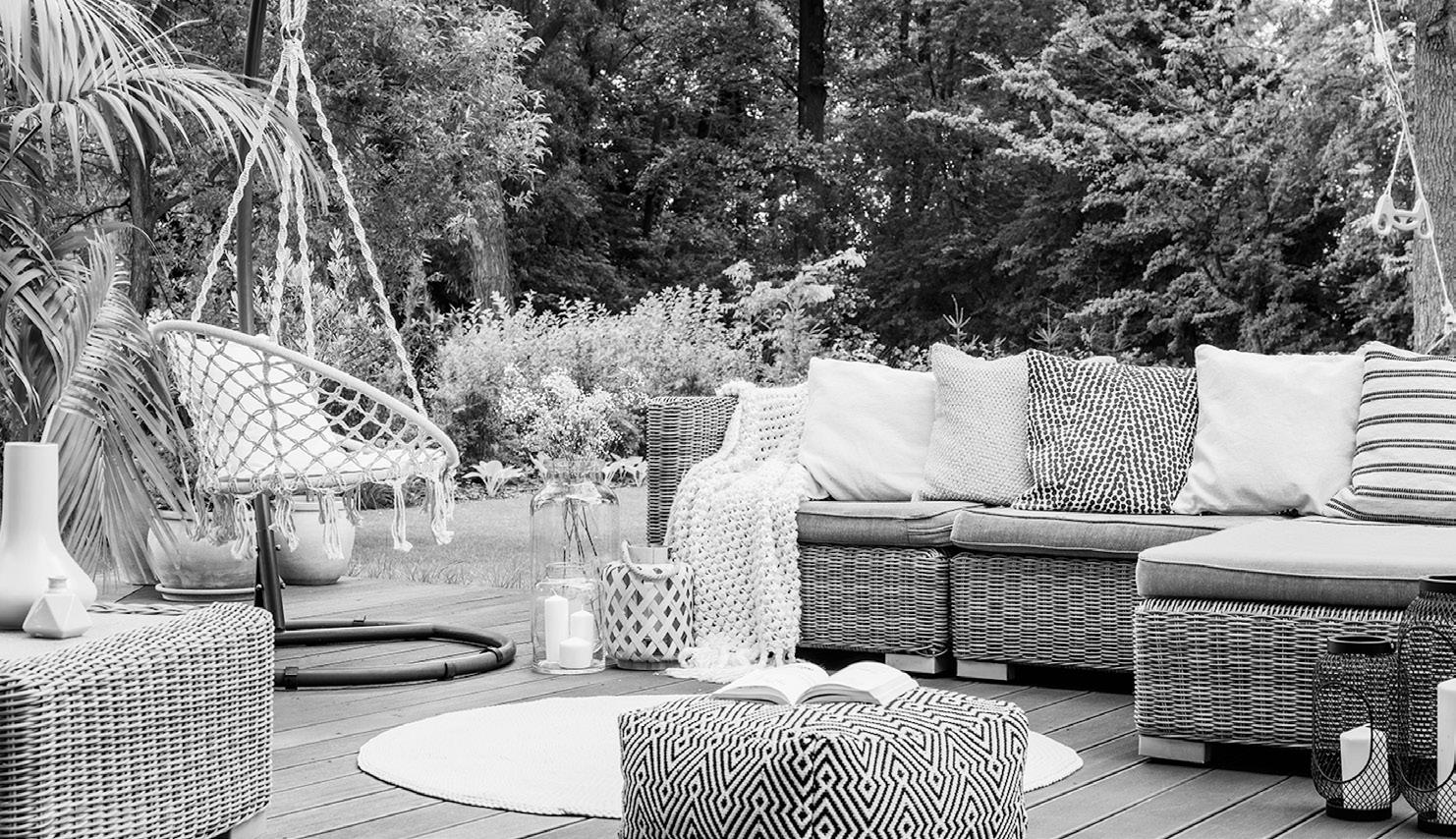
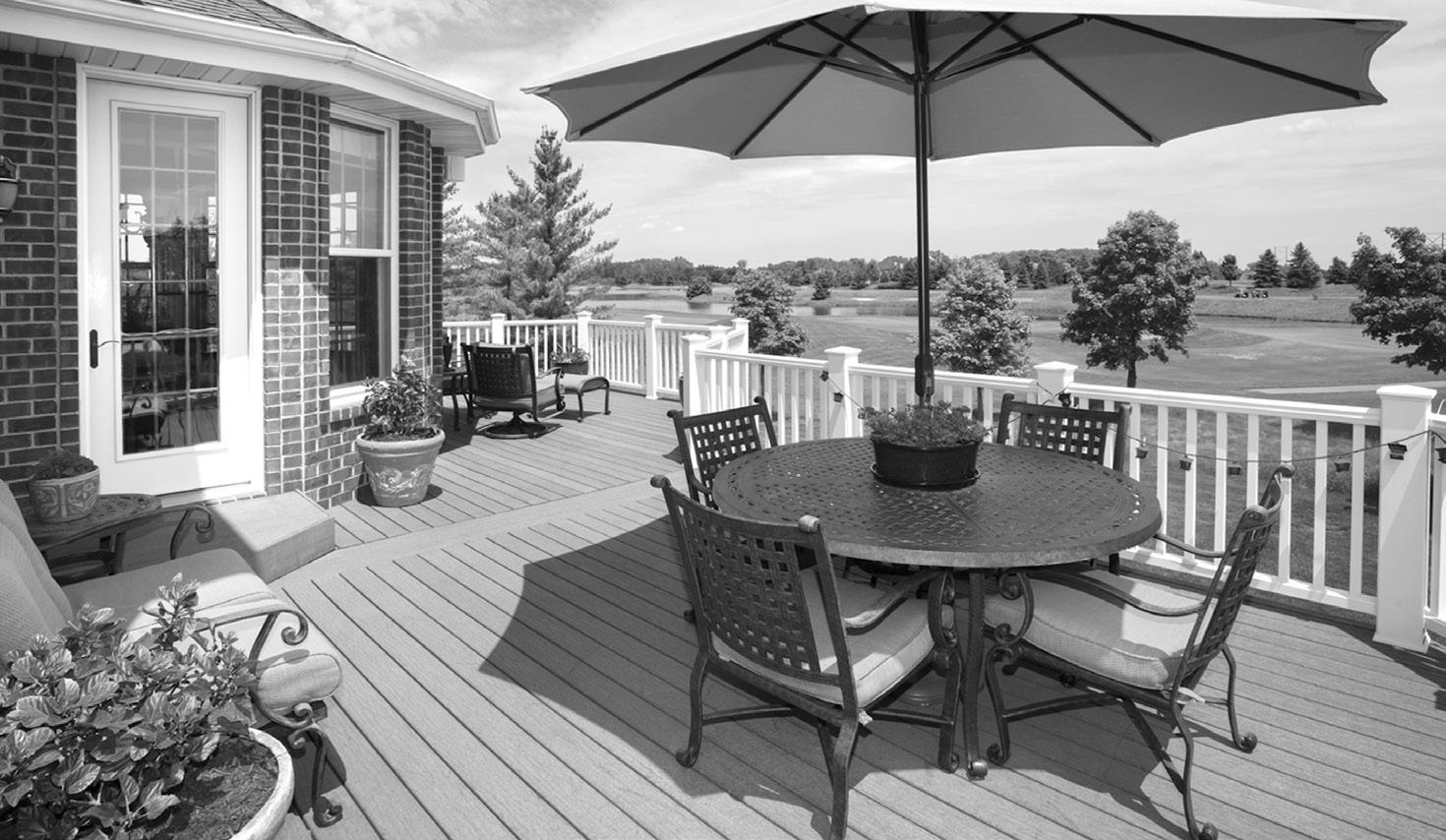
Al fresco entertaining has taken off in recent years. It’s much more common today to find homeowners who want to extend living spaces to the outdoors in meaningful ways that go beyond a few lawn chairs and a standalone grill. Dream backyard living rooms mirror similar spaces indoors and contain features like cozy corners, lush furniture and televisions or movie projectors. Plus, they often abut additional outdoor luxuries like fully functional kitchens.
Homeowners have various options when designing outdoor living spaces. Above all else, spaces should be created with the goal of encouraging people to get together. Here are some ideas.

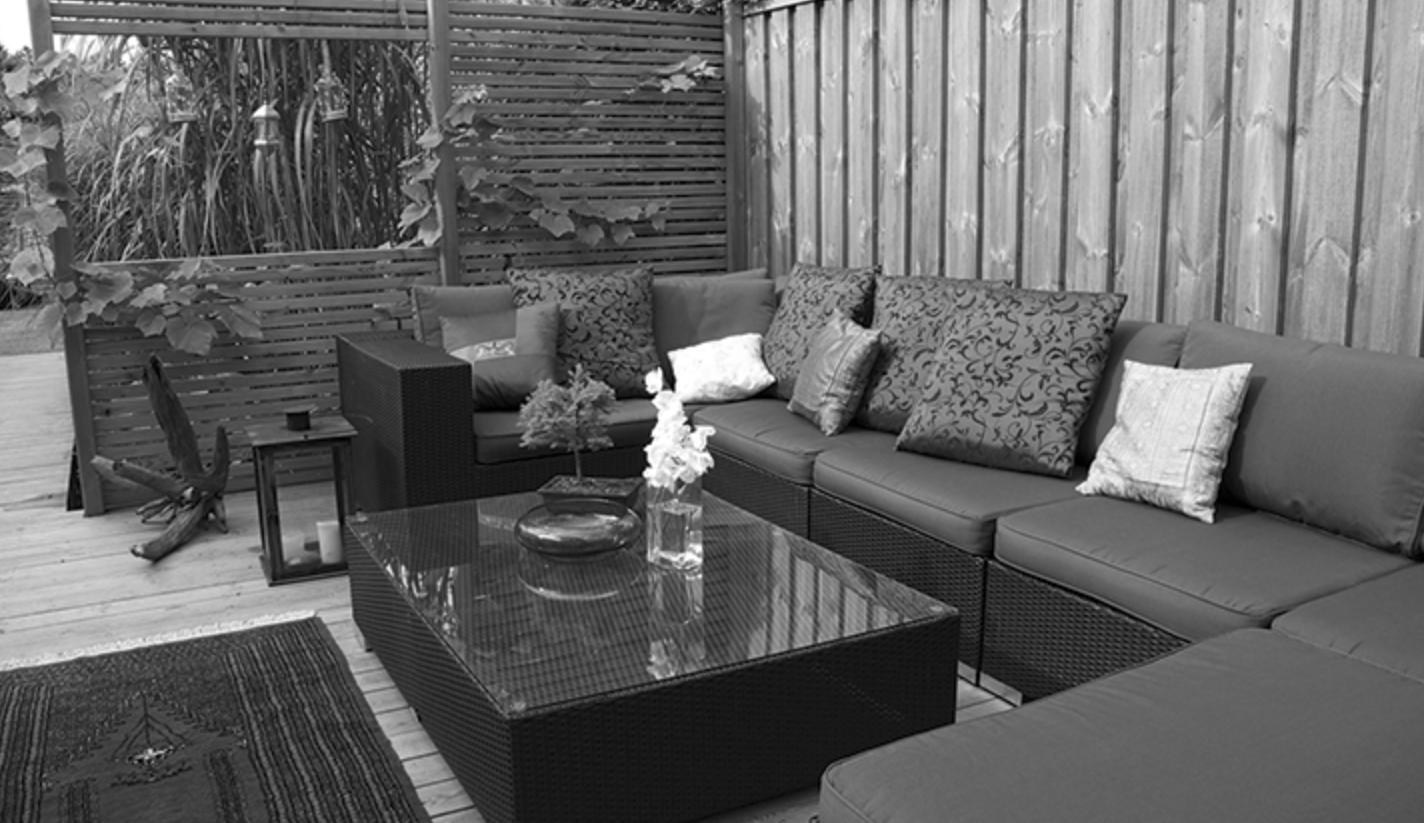
Homeowners with pools and other water features likely want this area to be the star of the entertaining space. Furniture will be more of the lounging variety, with comfortable chaises and spots to catch the sun. If a swim-up bar isn’t possible, a rolling bar cart can be stocked with essentials for cocktails or mocktails for the kids. Furniture near the pool will be exposed to a lot of sun, so look for durable, sun-resistant fabrics. Fireside nook
Gathering around an outdoor fireplace or fire pit is a treat when the weather cools down. Mirror the look of the same setup indoors by arranging outdoor sofas so they flank the fireplace.
Add some ottomans or side tables for stowing mulled cider or hot chocolate. A mantel above the fireplace can hold pots of greenery or candles that add to the ambiance.
Consider a custom banquette
Unused corners on a patio or rooftop retreat can utilize a custom-made banquette that provides the functionality of a sofa sectional outdoors. Have a contractor design it to the exact specifications of the area, and add a rug to ground the space.
the flooring
Depending on the entertaining space, a balance of soft grass, pavers or other hardscape will be necessary. Certain areas will need to be hard enough
for chairs and other furniture, particularly for those who are including an outdoor dining table in the design.
Create some privacy
Some homeowners are lucky enough to have natural barriers that offer privacy in their entertaining spaces. When there isn’t enough, tall shrubs, inexpensive bamboo fencing or trellis can provide a blind that makes an outdoor living area more cozy and private. Consider placing tall, potted plants on rolling casters to improve privacy as the need arises.
Outdoor living spaces are all the rage, and they can add value and functionality to most any home.




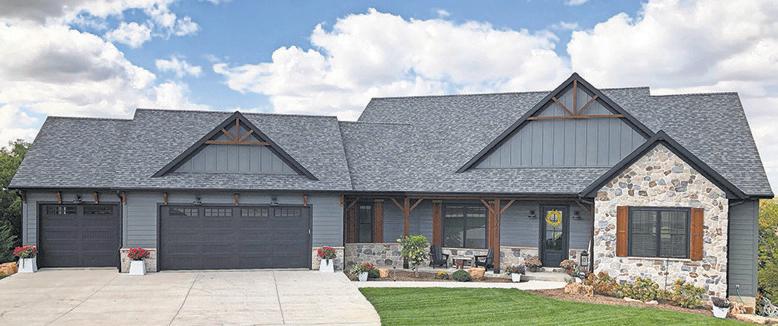




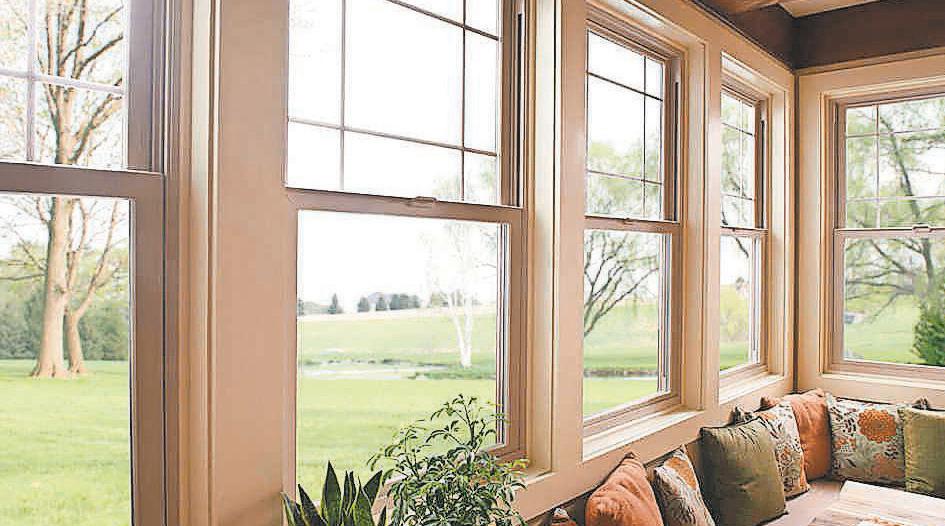

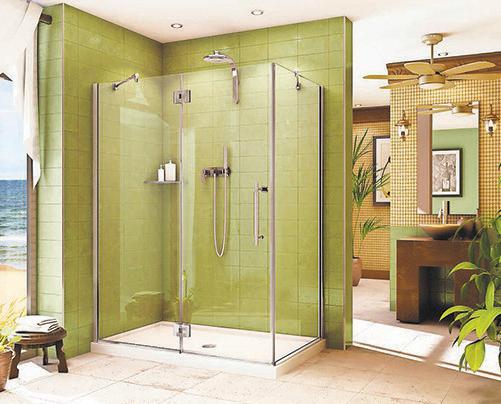



New growth is a hallmark of spring, whether it plays out in the birth of birds and bunnies or with the returned buds on trees and plant stalks. While most greenery rebounds naturally, lawns may need a little extra TLC in order to return to their once lush, green glory.
Revitalizing a lawn in spring is a multifaceted process but can be well worth the reward when green grass adds to a beautiful landscape and functional yard. Here is how to get started when the weather warms, courtesy of The Farmer’s Almanac and The Home Depot.
• Clean up debris. Spend a few hours raking up leaves from the lawn and removing any other winter debris like twigs so that air can reach the grass below. Also remove
any thatch that has developed.
• Test the soil. Take a sample of the soil to determine its pH level and nutrient needs. Then you can make adjustments to set a strong foundation for the lawn to grow.
• Do some weeding. Pull out any weeds that have poked through early on and apply a pre-emergent herbicide to prevent additional weeds from taking over.
• Start the aeration process. A core aerator punches holes into the soil. This enables air and water to penetrate through to the roots.
• Overseed the lawn. Apply grass seeds over the lawn, paying special attention to any bare or thin areas so that the seed will fill in the lawn.
• Water consistently. It is important to water the lawn deeply and consistently, especially when
the weather is dry, to help promote strong root development.
• Time fertilizer correctly. Apply a spring fertilizer around three weeks after the lawn starts to turn green or after the first two or three mowings. If fertilizer is applied too early it can feed weeds instead of the grass and result in fertilizer runoff.
• Mow to an appropriate height. Begin to mow when the ground is dry enough and the grass is long enough to need cutting. Leave some length to the lawn; otherwise, sunlight will reach the soil and encourage weed seeds to germinate.
With a little elbow grease at the start of spring, homeowners can establish strong and healthy lawns.
—
Metro Creative
















Outdoor living spaces have become sought-after commodities among homeowners. A 2022 survey of homeowners conducted by the New Home Trends Institute found that open yards are less appealing to home buyers than they once were. The survey noted that just 28 percent of respondents chose open yards, while 65 percent preferred patios and 55 percent chose decks. Green spaces remain popular, but the survey indicates that many would-be home buyers also want an outdoor living area to make the most of their home exteriors.
Homeowners aspiring to transform their home exterior spaces typically must decide between a deck or pavers when the time comes to plan such areas. That’s a personal choice homeowners must make, but those without strong feelings on either option can consider these tips as they try to decide if a deck or pavers are for them.
• Determine your budget. Budget is a notable variable with any home renova-
tion project, and the addition of an outdoor living space is no exception. The materials homeowners choose will ultimately determine the cost of each project. For example, composite decking materials tend to cost significantly more than wood decks, but that higher price tag also comes with less maintenance and typically a longer life span. Pavers may prove less expensive than composite decking, but those cost savings may be negligible if a yard requires extensive excavation to prepare an area. It requires patience, but gathering estimates of the various materials can serve as a good starting point when planning an outdoor living space. In addition, homeowners must recognize that material costs can fluctuate considerably over time, as such prices are often contingent on a range of variables, including supply chain issues. So it’s best to gather estimates in a short period of time to make the most accurate price comparisons.
• Identify your vision for the space.

Homeowners who have a vision for their outdoor living space, even if they are not sure about which material they prefer, may find the process goes more quickly and even more smoothly than those who are unsure about what they want. Those who prefer a flexible multi-use space may be best going with pavers, as the spaces can be easily converted and areas simply designated as one might differentiate between rooms inside the home. For example, an outdoor living room can be sepa-
rated with the installation of a pavillion and fireplace, while kitchen and dining areas can be separate spaces on the same patio. Decks tend to be less flexible, which might make them ideal for homeowners who prefer an outdoor dining area but don’t need a more expansive entertaining space. Of course, decks can be as big as homeowners choose, which can make the spaces more multi-functional.
• Recognize both may be in your best interest. Homeowners also should know that many outdoor living spaces feature both a deck and a paver patio. Homeowners may like an elevated deck that steps down to a patio, which can easily distinguish between the spaces and establish the area as a multifunctional space.
Homeowners planning outdoor living space projects may find themselves choosing between a deck and pavers. Each option can work, and homeowners may even want to combine the two.
—Metro Creative





















































































































Trends that seem ubiquitous one day can seemingly vanish before the sun rises again just 24 hours later. That’s especially true in the digital age, when overnight celebrities and viral videos can be on the tips of everyone’s tongue before being forgotten entirely when the next online sensation emerges in an increasingly rapid news cycle. Home trends typically benefit from a longer shelf life than viral videos and other fads that originate on the internet, and that’s something renovation-minded homeowners should consider when improving their homes. Homeowners preparing to do just that can consider these notable trends,
which the online renovation experts at Houzz suggest will be particularly popular in the year ahead.
• Rounded furnishings: Houzz noted that gentle curves and rounded edges embody the organic modern styles that many current homeowners love. Rounded dining tables and similarly circular coffee tables may merit consideration among homeowners who want to embrace popular trends.
• Arches: Houzz cites arches among the more popular modern trends, and the experts at Better Homes & Gardens note this unique, eye-catching style has been gaining popularity for several years. Better Homes & Gardens sug-
gests that part of the appeal of arched doorways could be their deviation from a more traditional door shape. That uniqueness draws the attention of residents and visitors alike, and Houzz notes that arched windows, cabinets and even millwork details are part of the pivot toward arches.
• Stove alcoves: If it’s a touch of history homeowners want, kitchen range alcoves might be just the project for them. Range alcoves call an earlier time to mind when wood burning stoves were commonplace. The report from Houzz notes range alcoves immediately draw attention, which undoubtedly adds to their appeal.
• Wood for warmth: Homeowners who hear “wood and warmth” might think fireplaces, but Houzz reports that wood elements are being incorporated into interior designs as a means to giving homes a more cozy vibe. Ceiling beams, trim, wall paneling, and cabinetry are utilizing wood to add warmth to a home.
Trends come and go, but home trends typically have more staying power than styles that emerge in other arenas. Homeowners who want to upgrade their home interiors can consider the latest trends and choose those that align with their own personal tastes.
— Meto Creative
Kitchens and bathrooms are two popular areas to address when renovating a home. Modernize Home Services says 26 percent of sellers make bathroom improvements to their homes before listing. Midscale bath remodels will net a return on investment of about 64 percent, while a luxury bathroom overhaul has an ROI of about 57 percent.
When considering bathroom renovations, homeowners may want to include some unique features that can add style and function, not to mention some much-deserved luxury. With that in mind, the following are some luxurious features to consider.
• Heated floors: There is something to be said for stepping out of the shower and being met with warmth underfoot. Heated floors are not just for people who live in cold climates, either. When the air conditioning is pumping on hot days, tile floors can feel chilly. Heated floors also are aesthetically appealing because homeowners don’t have to factor in baseboard heaters or forced-air vents.
• Steam showers: There are many different steam showers on the market, and each can turn regular showers into steamy spa-like enclaves. A steam shower is similar to a sauna and utilizes a steam generator to produce steam in a single area, advises Badeloft® Luxury Bathrooms.
• Soaking tub: Although the majority of people shower as part of their daily hygiene routine, a deep soaking tub separate from the shower is ideal for those who enjoy a good bath.
• Luxury mirror: Upgrad-

ing the bathroom mirror to one that offers features like defoggers, integrated lighting and a dimmer setting can elevate the bathroom.
• Floating vanity: A floating vanity is mounted directly to the wall to leave space underneath. Better Homes & Gardens says a floating vanity can lend an airy feel to a
bathroom.
• Frameless shower: A frameless (glass) shower door is not only luxurious but also functional for people who want to age in place. With no edge or lip to step over to enter the shower, anyone with mobility challenges can walk into a frameless shower safely.
• Water closet: If space al-
lows, separating the toilet in a water closet from the rest of the bathroom space affords even more privacy. Plus, in couple’s bathrooms, a water closet enables two to use the bathroom at the same time for different functions.
• Walk-in-closet: Relocating the bedroom closet to right off the owner’s bathroom
affords an immediate opportunity to dress comfortably, thus streamlining a morning routine.
Bathroom renovations are worthwhile investments. Choosing some unique upgrades can enhance the design and function of these important spaces.
—Metro Creative

Many components come together to create a home interior that is welcoming and comfortable. Lighting is an important part of any design and plays a key role in home decor. Lighting can change the atmosphere of a room with the flip of a switch. Through lighting, one can make a space seem more cozy, or even make small spaces seem more expansive.
Homeowners should not underestimate the power of lighting in their homes. In addition to making spaces functional and more attractive, lighting can affect personal well-being, as a well-lit room can benefit mental health. The following are various types of lighting and how they can work best in a home.
Ambient
Ambient lighting is blanket lighting that is used to evenly illuminate a room. Lowes Home Improvement says this is the general lighting that every home needs. Fixtures like overhead lights, floor lamps
and more provide enough light for people to function safely indoors. Ambient lighting is the foundation for every interior lighting scenario, and ambient lighting fixtures should be featured toward the center of the room and closer to the ceiling to disperse light more efficiently.
Task lighting
The home improvement firm Hiller describes task lighting as lighting directed toward a specific area to give more detail to objects. Closerange work such as crafting, reading, cooking, and desk work requires task lighting so projects are effectively illuminated. Task lighting can be installed anywhere a person requires direct, intense light to see details. This means lights can be under cabinetry or on a desk for reading mail or homework.
Accent lighting
Lowes indicates that accent lighting balances lighting and spotlights certain points in a space. For example, accent
lighting can be utilized to highlight collectibles or artwork. Accent lighting may call attention to entryways, plants, fireplaces, or other points. Accent lighting typically adds character to a room and is not necessarily bright enough to sufficiently illuminate a space.
Decorative lighting
Decorative lighting is used exclusively for aesthetic purposes, according to BLOCC House of Interiors. It adds style and drama to spaces. Decorative lighting fixtures include pendants, sconces, chandeliers, and more. Decorative lighting also may be whimsical, such as fairy lights strung in a child’s bedroom or neon lights in a home bar or sports room.
Separately, these lighting options may not be enough to suit your needs. But when combined, these types of lighting help to establish an interesting and functional home interior design that fits with a person’s lifestyle and needs.
— Metro Creative
Homeowners make many notable decisions when designing their home interiors, with some choices proving more bold than others. The decision to decorate with neutral colors might not be the boldest move homeowners can make, but there are numerous reasons to stay neutral with a color scheme.
• Versatility: Neutral colors afford homeowners endless opportunities to play around with textures, patterns, furnishings, and more. For example, a neutral color on a living room wall can ensure a boldly colored couch or chair won’t contrast with its surroundings. In fact, there’s no end to the options homeowners have to customize the look of a room with bold features or furnishings when neutral colors featurely prominently in the space.
• Flexibility: Neutral colors are more flexible than bolder alternatives because they likely won’t require a complete overhaul of a room when homeowners want to spice things up with new features and furnishings. That flexibility will be appreciated by homeowners who every so often like to experiment with a new vibe or look in their homes.
• Tranquility: Homes are often characterized as their owners’ private sanctuaries from the hustle and bustle that goes on outside those walls, and neutral colors are often lauded for the tranquil vibe they help to create in a space. Neutral colors are soft, and that can lend a serene and calming atmosphere to the interior spaces of a home.
• Brightness: Neutral colors are lighter in tone and thus pair well with natural light. That mixture can amplify brightness within a home and give it an uplifting vibe that residents and guests alike will appreciate. Neutral colors are not bold, but the benefits they provide open doors to an array of design styles and decor choices that enable homeowners to go in various directions with the interior spaces in their homes.
— Metro Creative

• Trendy: Neutral colors are not as vulnerable to trends as other design choices. In fact, neutral colors are effectively their own trend and won’t get in the way of homeowners who want to change things up. But unlike other trends that must be replaced when homeowners grow tired of them, neutral colors can remain thanks to their compatability with so many styles.



